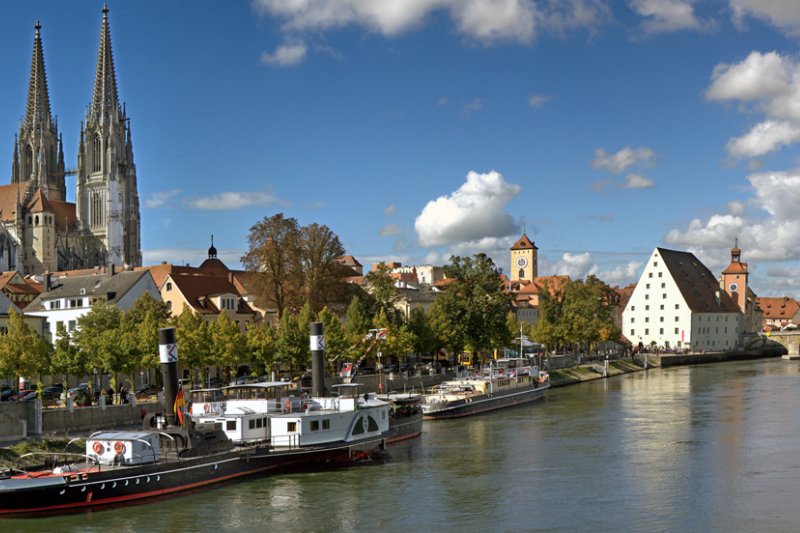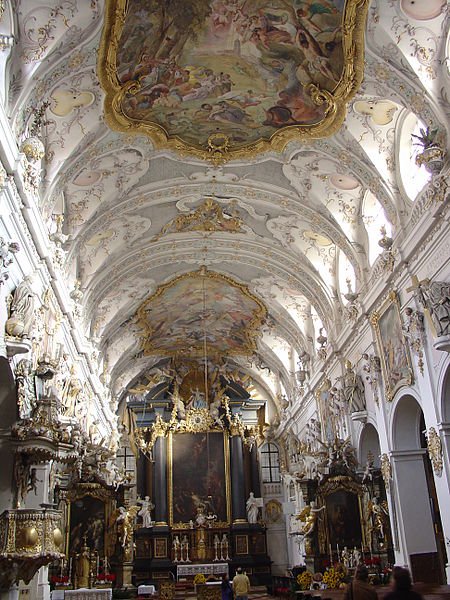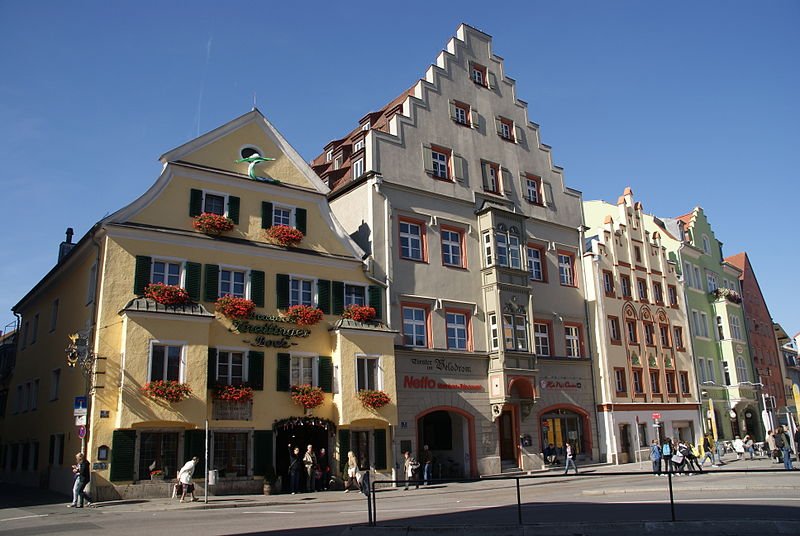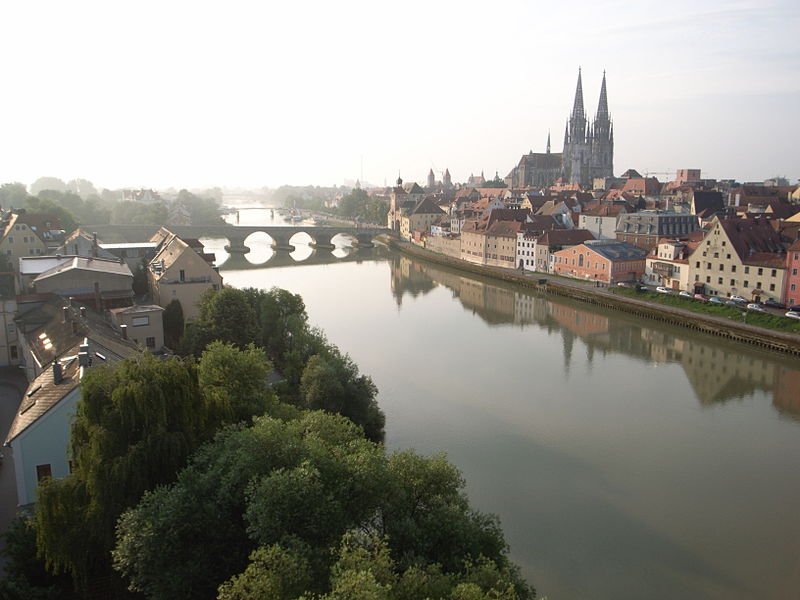 Panoramic view of Regensburg from the Danube
Panoramic view of Regensburg from the DanubeSource: https://commons.wikimedia.org/wiki/File:Regensburg-dom-steinerne-bruecke.jpg
Author: Hpschaefer

Regensburg, historically known as Ratisbon, is a major city in Bavaria, Germany. Covering 80.76 sq km (31.18 sq mi), Regensburg has a population of 136,000 (2011 estimate), at an elevation from 326 m to 471 m. The medieval quarters of Regensburg is noted for its exceptionally well preserved historic structures that span over two millenia. They include ancient Roman ruins as well as Romanesque and Gothic buildings.
Many of the buildings in Regensburg date from the 11th to the 13 century. They include the market, city hall and cathedral. These define the character of the town, which has a number of dark, narrow alleys and strong fortifications. Also worth exploring are its medieval patrician houses, towers and churches. The Old Town of Regensburg with Stadtamhof was inscribed as a World Heritage Site during the 30th session of the World Heritage Committee in Vilnius, Lithuania, on 9 - 16 July, 2006.
World Heritage Site Inscription Details
Location:Inscription Year:
Type of Site: Cultural / Natural / Mixed
Inscription Criteria: I, II, III, IV, V, VI, VII, VIII, IX, X
 Steinbrücke-Regensburg
Steinbrücke-RegensburgSource: https://commons.wikimedia.org/wiki/File:Steinbruecke-regensburg-rr.jpg
Author: Marcela

Regensburg got its name for the geographical location at the confluence of the Danube with the Regen rivers. It is at the gateway to the Bavarian Forest, which stretches out to the east of the city.
Regensburg has a long history stretching back to the Stone Age. During the Celtic period, it was known as Radasbona. Its present name Regensburg draws on the Roman period, when the Romans built a fort there known as Castra Regina. Regensburg became a Free Imperial City in 1245, and was enjoying its golden years until trade routes shifted away in the late Middle Ages.
 St Emeram Basilica, Regensburg
St Emeram Basilica, RegensburgSource: https://commons.wikimedia.org/wiki/File:Regensburg_St_Emmeran_Basilika_2.jpg
Author: Allie_Caulfield

Regensburg converted to the Lutheran faith with the Protestant Reformation in 1542. The Town Council remained entirely Lutheran until the incorporation of the city into the Principality of Regensburg in 1803. During this period, its minority Catholic population faced discrimination such as the denial of some civil rights.
Regensburg was the permanent seat of the Reichstag of the Holy Roman Empire from 1663 to 1806. It however lost its status as a Free City in 1803. Unlike most major cities in Germany, Regensburg managed to escape widespread bombing during the Second World War, enabling its well-preserved city center to be listed as a World Heritage Site.
 Arnulfsplatz, Regensburg
Arnulfsplatz, RegensburgSource: https://commons.wikimedia.org/wiki/File:Arnulfsplatz_%28Regensburg%29.JPG
Author: Johanning

Visiting Regensburg, Germany
You can take a train from major cities in Germany to Regensburg. If you are coming by flight, the nearest airports are at Munich and Nuremberg. Regensburg is on the Autobahn 3 and Autobahn 93. The Autobahn 3 connects Regensburg with Nuremberg to the northwest and Passau to the southeast, while Autobahn 93 connects it with Munich to the south. The Danube at Regensburg
The Danube at RegensburgSource: https://commons.wikimedia.org/wiki/File:Regensburg_mit_Steinerne_Br%C3%BCcke,_Dom_und_Stadt_am_Hof.JPG
Author: Nkoepff

World Heritage Sites in Regensburg
- Old town of Regensburg with Stadtamhof
Places of Interest in Regensburg, Germany
- Alte Kapelle
- Altes Rathaus
- Baumburger Turm
- Dom St Peter
- Schloss Thurn und Taxis
- Steinerne Brücke (Stone Bridge)
- Wurstküche
 Latest updates on Penang Travel Tips
Latest updates on Penang Travel Tips

Copyright © 2003-2025 Timothy Tye. All Rights Reserved.

 Go Back
Go Back